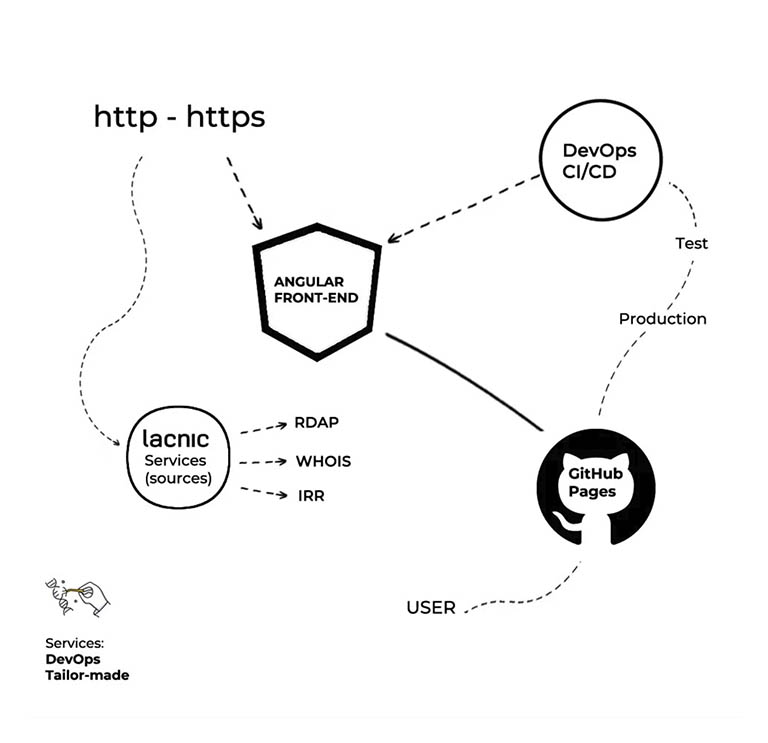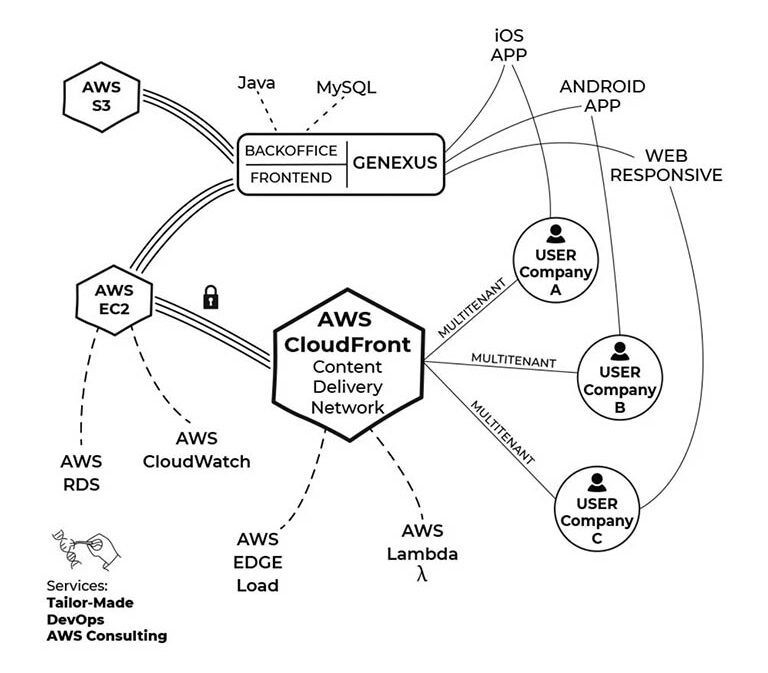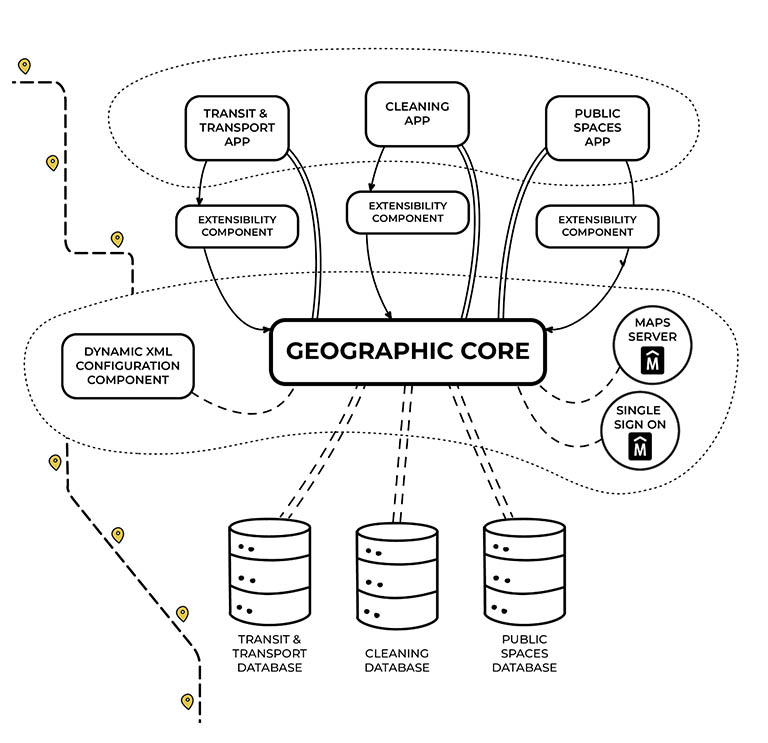Portfolio
The solution for LACNIC
Category:
Integrated technologies:
Angular, Github Actions, Github Pages

LACNIC
LACNIC has two different applications: RDAP Web, responsible for formatting and displaying user-friendly results of RDAP queries, and LACNIC Query, an application that delivers WHOIS and IRR queries as well as RDAP results.
The challenge is twofold, first we need to upgrade RDAP Web to the latest version of Angular and add new features including nameserver, domain queries and new lookups.
Secondly, we need to migrate LACNIC Query from Java to Angular technology and interconnect both applications so that when the user performs a query in LACNIC Query, the RDAP Web results are also displayed embedded.
The challenge
LACNIC is the Internet Address Registry for Latin America and the Caribbean. It administers IPv4 / IPv6 addresses and ASNs using the policy development process defined by the Internet community. LACNIC is an international non-governmental organization established in Uruguay in 2002.
It is responsible for the allocation and administration of Internet number resources (IPv4, IPv6), Autonomous System Numbers and Reverse Resolution for the region. LACNIC contributes to regional Internet development through an active cooperation policy. It promotes and defends the interests of the regional community and helps create the conditions for the Internet to function as an effective instrument for social inclusion and economic development in Latin America and the Caribbean.
The results
01
The migration of Lacnic Query from Java to a client-side technology such as Angular helped LACNIC optimize its resources. Hosting the application on GitHub pages improved reliability and performance by reducing hardware and operational costs.
02
Upgrading RDAP Web to the latest version of Angular ensures better performance, bug fixes and enhancements. It also reduces dependencies and access to all new capabilities and libraries.
03
Upgrading existing functionalities and adding new features will enrich the RDAP Web user experience, allowing full access to RDAP information in a user-friendly manner. By adding new features, users get 30% to 40% more information from their results, as well as 3 completely new open searches and 2 additional specific queries.


